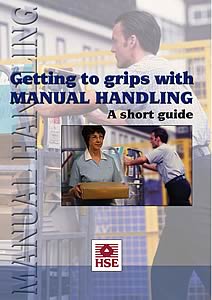 |
|||||||||
|
|||||||||||||||||||
|
|
Back Pain Message For North West Farmers 06/07/05
Lifting improperly is the largest single cause of back pain and injury. In a work related illness survey in 2001/02 it was revealed that agricultural workers over the previous eight years had, at 38 per 1000, the highest incidence rate of Musculo Skeletal Disorders (MSDs) of any industry. Back problems are second only to the common cold as the most frequent cause of lost work time and compensation in adults under the age of 45. So how can a self-employed farmer, employer or an employee ensure that they minimise the risk of back injury on the farm? Plan. If possible DON'T do it by hand. Sometimes it cannot be avoided, so if you have to manually handle the load know where you are going to put it, ensure the path is clear of obstacles and hazards, and that any doors are open. Size up the load. Find out its weight - most items will now tell you the weight on the packaging. Wherever possible use a mechanical lifting device such as a telehandler or hoist. If it has to be moved by hand, get help from a fellow worker, especially if the load is heavy or awkward. If lifting by hand, make sure everyone involved is trained in safe lifting techniques. Bend your knees. This is the single most important rule when lifting moderate to heavy objects. Do not twist your body once the lift is made. Turn your body by changing foot positions. Make sure of your footing before setting out. Keep the load close to your body and keep it steady. Never lift or carry a load above your head or on the side of your body. Set the load down properly. Lower the load slowly by bending your knees, keeping your back upright, and letting your legs do most of the work. If possible store items at about waist height as opposed to using the floor. Always push an object, rather than pull it. Pushing puts less strain on the back and is safer should the object tip over. If possible split a bulky load into several smaller loads. Trying to lift a heavy load all at once may be asking for trouble. Long objects, such as pipes or timber, may not be heavy, but the weight might not be balanced and such lifting could result in back sprain. Get deliveries made to where you want them. Plan for deliveries, so that the load is delivered to the point where you want it, not where the driver thinks it should be left. How many times have you had to move items such as oil drums or feed bags after they have been delivered? If this is not possible, have a pallet available so you can use the telehandler to move the delivery around. Leave a note so that delivery drivers are aware that you want items placed on the pallet if you are not going to be available when it is delivered. By using common sense, you can help keep your back out of trouble. Every time you think about lifting, think defensively about your back and the possibility of a back injury. If it's your back you put out, who does the work while you are flat out? Check for Manual Handling course providers through LANTRA, Lantra House, Stoneleigh Park, Nr Coventry, Warwickshire CV8 2LG (Tel 024 7669 6996, Fax 024 7669 6732), or your local agricultural or higher education college.
| ||||||||||||||||||

|
|
||||||||||||||||||
| home | agri-services | pedigree
pen | news | dairy | beef | machinery BPS | property | organisations | site map |
|||||||||||||||||||

